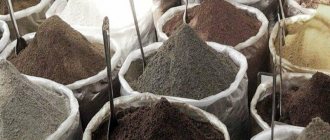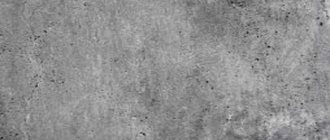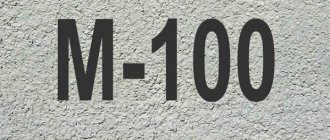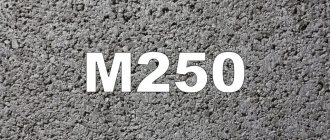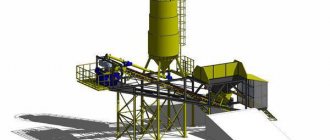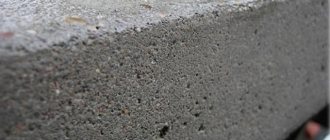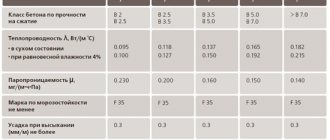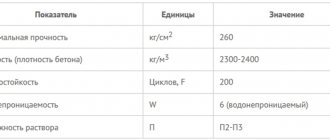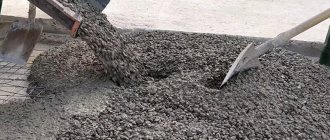Hydraulic concrete is a heavy building material with increased resistance to external factors. It is used for the construction and repair of elements immersed in water. Despite the porous surface, it can withstand strong static and dynamic loads and ensure high durability of structures. There are several types of hydraulic concrete, they differ in the fraction of cement in the composition, additional components, technical characteristics and even appearance. When choosing a specific brand, you should take into account the requirements for the facility being built and the moisture protection features.
What is hydraulic concrete and its technical characteristics
Hydroconcrete in construction includes heavy types of cement mortars that have high strength and stability. The main feature of this material is the possibility of use in the construction of objects immersed in sea or fresh water.
It can withstand heavy physical exertion even in low temperature conditions.
Scope of application and its advantages
Hydraulic concrete is used for the construction of underwater and above-water structures, including dams and dams. In addition, the material has found wide application in the construction of anti-radiation shelters and runways, where enhanced resistance to external influences is required. Advantages:
- waterproof regardless of external conditions;
- immunity to low temperatures;
- high strength and density.
Working with hydroconcrete requires not only certain skills, but also special equipment. It is almost impossible to prepare a large volume of solution without a production concrete mixer.
Waterproof cement is resistant to temperature changes and can withstand severe frosts. This property allows it to be used for the construction of structures in the Far North.
Current GOST 26633 2015
Unlike architectural concrete, high demands are placed on hydraulic concrete taking into account modern regulatory standards. A cement mortar of this type must comply with two GOST standards at once - 26633-2015, as well as 4795-53 (hydraulic concrete). When purchasing material for home construction, you should check the technical data sheet from the manufacturer.
Areas of use
Hydraulic concrete is used in industrial and private construction. Due to its special properties, the material is in demand for the construction of buildings on acidic soils and in areas where the groundwater level reaches a high level.
Hydroconcrete is used in the construction of:
- dams;
- ports, embankments and adjacent areas;
- sewer communications;
- bank vaults;
- overpasses, etc.
Using a waterproof solution, decorative ponds, fountains, and swimming pools are installed.
Hydroconcrete is also used in the construction of bridge structures. The construction of enterprises and facilities in the chemical industry, where high resistance of structures to aggressive environments is required, cannot be done without it.
Classification
The composition and technical characteristics of hydraulic concrete differ depending on the purposes of construction and operational requirements for the facility. In each case, one should focus on the climatic conditions in the region, the structural elements - they can be thin-walled, massive or prefabricated. Read about Tex finishing and latex putty here.
What types can there be?
According to regulatory documents, all types of hydraulic concrete are usually divided depending on the specific application. Classification of cement structures:
- location relative to the water level - underwater and above water;
- object scale – massive, prefabricated, thin;
- according to the sphere of influence of external factors - external and internal zones;
- depending on the influence of water flow - pressure, non-pressure.
The technical characteristics of the solution depend on the brand of hydraulic cement and the presence of specialized components in the composition.
W marking and classes
The strength of concrete, like the density of M500 cement, is determined by its class. For structures in contact with water, cement grade no higher than B35 is used. The material always has markings that allow you to determine its basic properties. The following options are possible:
- BPT – underwater cement for thin-walled structures;
- OSH – for areas with variable water horizons;
- BNP – for above-water massive structures.
Even before the start of construction, it is necessary to determine the required quality of cement in order to formulate all regulations in advance as part of the project documentation. Read about ceramic brick and stone according to GOST 530 here.
The cement base has a shelf life. If stored improperly, even durable hydroconcrete will experience a reduction in its basic technical indicators.
What is added to improve properties
The physical properties of concrete are determined by the fraction of the main components, as well as the presence of additional components. The following additives are used to prepare waterproof cement:
- plasticizers - sulfate-yeast mash, silicon substances, neutralized resin. Their content should not exceed 3%.
- structure sealants – ferric chloride, nitrate, sodium silicate, maximum amount up to 1%;
- hydrophobic additives – sodium oleate, zinc and calcium stearate in amounts up to 1%.
Each type of hydraulic concrete always indicates the composition and percentage of the main components. They must comply with existing regulatory requirements.
Key Compliance Indicators
Hydraulic concrete of any brand must be waterproof and have low heat generation during the hardening process. It is important that the material exhibits minimal shrinkage and is resistant to abrasion. Technical quality requirements:
- compressive strength up to B35;
- for axial tension – maximum Bt 3.2;
- water resistance – W2-20;
- frost resistance – F50-600
Resistance to low temperatures is an additional requirement. It is determined by the climatic conditions in the region where the construction of the facility is planned. This material will tell you about larch decking boards.
What is included and components
The main components of hydraulic concrete are cement, sand and crushed stone. Their quantity and fraction depend on the quality and labeling of the material. Additional components are determined by the construction requirements.
Portland cement
It is a binder obtained by finely grinding clinker, gypsum and calcium silicate. The additive is used to prepare frost-resistant concrete, which will often come into contact with water. Read about the dimensions of ordinary red brick at this link.
Sulfate resistant
A type of hydraulic concrete used in the construction of structures in hard water. The material is expensive and has increased resistance to calcium salts.
Hydrophobic grades
As a rule, this is concrete containing the additives SDB and SNV, as well as microfillers. This allows the solution to be used as a façade putty for exterior use in aggressive environments under high pressure.
Pozzolanic
This cement contains an increased amount of slag-sand components. This allows the material to be used in extreme conditions, for the construction of elements in hard and sea water.
Instead of pozzolanic cement, it is permissible to use white-silica cement. Thanks to the presence of silicon in the composition, concrete can withstand exposure to aggressive sulfate environments, for example, in oil and gas rigs.
General information
Hydraulic concrete - GOST 4795–53 is intended for the construction of structures or their elements that periodically or constantly interact with water and has a whole range of properties that contribute to the long-term operation of such structures in these conditions.
[my_custom_ad_shortcode1]
What is important to consider when making it yourself
The technology for preparing cement mortar for the construction of objects in special conditions is practically no different from working with conventional concrete grades. What to look for when choosing a water-cement ratio:
- characteristics of the future design;
- determination of the recommended aggregate in the form of crushed stone and sand;
- calculation of the mixture mobility index;
- composition and volume of modifiers and additional components.
The optimal aggregate fraction is 15-20 cm; in order to reduce the consumption of the working mixture, larger elements can be used. However, in this case, additional compaction with an internal vibrator is required.
Find out about finishing one-component putty for cars in this article.
Cooking recipe: proportions
If you plan to use hydraulic concrete for the construction of small structures, you can use the following recipe:
- 500 kg of cement;
- 1100 kg of crushed stone;
- 600 kg of sand;
- 1.5 kg plasticizer SZ;
- 5 kg calcium nitrate;
- 1 kg GKZh.
It should be remembered that heavy types of cement quickly shrink, acquiring strength and viscosity. Therefore, it is recommended to use a concrete mixer to thoroughly mix the components.
Types of effective additives and their mechanism of action
- Plasticizers: Suprplasticizer S-3, Superplast and component D5. All types of plasticizers have the same mechanism of action - the formation of a persistent waterproof film around cement particles and the creation of an electrical charge. This greatly activates the finished concrete and it compacts well;
- Colmat additives: bitumen emulsion, calcium nitrate, aluminum sulfate, iron sulfate and nitrate. They also significantly increase the density of the poured structure. The desired effect is obtained as a result of a chemical reaction between the additive, water and the binder - the formation of water-insoluble compounds that reliably clog all pores and even significant voids (colmatation process);
- Polymer additives: methyl cellulose, cellulose methyl ether, as well as diethylene glycol, triethylene glycol and polyamide resins. This type of additive provides the highest level of water resistance. The required effect is ensured by enveloping the particles of concrete components and forming a very strong waterproof polymer film on them.
You should know! Only a monolithic concrete structure can be made waterproof: a monolithic foundation, a pool or well bowl, a reservoir, etc. It is impossible to make prefabricated concrete structures 100% waterproof by any means or technologies!
Stamps
To prepare moisture-resistant concrete, it is important to correctly select the brand of cement. The shrinkage rate, strength and performance characteristics of the structure depend on this.
B35 W12 F300
Hydraulic concrete recommended for the construction of subways, dams and dams. The material is highly resistant to temperature and water. It is not recommended for the construction of residential buildings and domestic buildings due to its high cost.
Price – from 45 rubles per 1 kg.
B25 M350
The sand-cement mixture of this brand has increased water resistance (W8), as well as frost resistance in the range of F100-300. Refers to low-moving solutions; a vibration compactor is required. Used for foundations of multi-storey buildings, airfield strips, floor slabs and piles.

